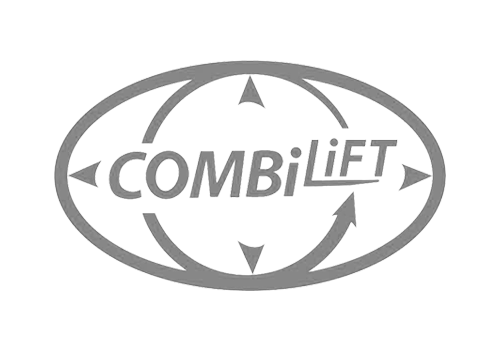
As a warehouse owner or operator, ensuring smooth and efficient daily procedures is always a top priority. Embracing new technologies is one of the best ways to achieve optimization. However, successfully implementing these innovations requires you to take a few considerations into account.
In this comprehensive guide, we explore some of the latest technological advancements in warehousing and their potential positive impact on your operations.
3 Key Technological Advancements in Warehousing
We’re well into the digital age, and technology has become very prevalent in our everyday lives. It is no surprise that tech can also play a significant role in warehouse operations and help transform the way warehouses function. Three standout technologies have emerged as game-changers, making a noticeable impact in this space.
1. Automation
Warehouse automation is the process of moving inventory in, out and around the warehouse with as little human assistance as possible. This is achieved through technologies like automated guided vehicles (AGVs), which can help move goods around a warehouse without a driver. These solutions reduce manual labor requirements and can significantly speed up operations, leading to smoother workflows and procedures.
2. IoT and Sensors
The Internet of Things (IoT) and sensor technology play an important role in optimization by allowing real-time tracking and monitoring of equipment, inventory and other warehouse conditions. In addition, sensors can give you data on humidity levels, temperature and current stock. This information can ultimately assist in inventory management.
For example, a forklift telemetry solution uses special sensors on forklifts to collect real-time data, which warehouse managers can then analyze without being physically present. The technology helps managers track how the forklifts are used, how drivers perform and whether the vehicles need maintenance.
3. Warehouse Management Systems
Warehouse management systems (WMS) are software applications designed to help you manage and control warehouse operations. For example, operator-assist technology offers advanced systems to support and enhance operators’ performance. This tech gives operators real-time feedback, alerts and guidance during warehouse operations.
Recent Improvements and Trends
New technologies are constantly emerging, many of which can be a game-changer for warehouses. Some of these exciting technologies include:
- Artificial intelligence (AI) and machine learning: AI and machine learning are revolutionizing warehousing by enabling intelligent decision-making. AI algorithms can optimize fleet management, route planning and warehouse operations.
- Robotic trucks: These fall under warehouse robotics. They are self-driving vehicles designed for material handling tasks. The trucks use cameras, sensors and mapping technology to navigate through a warehouse and interact safely with humans.
- Motive power and charging: This is the energy source and charging solutions used to operate warehouse equipment, such as forklifts. The combination of motive power and charging helps ensure continuous operation of equipment, optimizing efficiency and maintaining productivity.
- Cloud computing: These solutions offer flexible storage, scalability and software applications for warehouse operations. Adopting cloud-based WMS that centralizes inventory data can help streamline order fulfillment processes and enable remote access to warehouse information.
- Predictive maintenance technologies: By monitoring equipment performance in real time, predictive maintenance solutions can enhance equipment reliability, optimize operational uptime and even reduce maintenance costs.
Benefits of Adopting Advanced Technologies in Your Warehouse
There are many advantages to using tech developments in your warehouse operations:
- Increased efficiency: When more systems are automated, operations run faster and more accurately. This can lead to better turnaround times and more productivity and help to make your company more competitive.
- Safer conditions: Regular warehouse activities like stacking or climbing can lead to accidents. Even forklifts (a common warehouse vehicle) can contribute to many accidents. However, when we involve more automation and machines in these tasks, we help reduce the chances of employees getting hurt.
- Improved inventory management: Automated systems give you access to better inventory tracking, which can help you gain better control over when to order more or less inventory.
- Cost savings: Automating tasks can significantly benefit cost savings. From reduced labor expenses to increased efficiency, your warehouse can enjoy faster processes at significantly lower operational costs while boosting productivity and accuracy.
- Happier customers: When your automated system works well, this leads to faster order processing, ultimately leading to better overall operations. Satisfying customers is easier when your business is running smoothly and your team has more free time.
How to Successfully Implement Warehouse Technology
Implementing any new technology in a warehouse can initially feel overwhelming. However, with the right approach, you and your team can receive many rewards.
Here’s how to seamlessly integrate technological advancements and make it a success.
1. Understand Your Needs
Start by identifying which processes cause bottlenecks or need the most manual labor in your warehouse. Is it order picking, inventory management or shipping? This step is essential in helping you understand where automation will have the most impact on your business.
2. Choose the Right Technology
Above, we’ve listed a few available warehouse technologies. However, they may not all be relevant to your business. It’s essential to understand what each technology offers and choose the one that’s most relevant to your needs.
3. Set Clear Goals
What do you want this new technology to help your team achieve and how will you use it to accomplish your goals? Whether it’s faster order fulfillment, automated storage or fewer handling errors, a clear understanding of your objectives is essential, as this should guide your decision-making.
4. Plan for Integration
Your new technology must integrate smoothly with your existing WMS and other processes to avoid unnecessary disruptions. It’s important to create a detailed implementation plan that outlines the exact steps you need to take, a timeline for integration and the resources you’ll need every step of the way.
5. Provide Training and Support
Training warehouse staff on how to use the new technology effectively is crucial. This might mean hands-on training sessions, workshops and other relevant resources to ensure every operator is comfortable and proficient with the technology.
6. Start Small
While it may be tempting to implement multiple technological solutions all at once, starting with one or two new technologies at a time allows you to test and refine your system. Once you see success, you can replicate and scale it confidently. If there are challenges, starting small can help you handle them more effectively and make adjustments as needed.
Create a Custom Warehouse Solution With Burns Industrial Equipment Today
Carefully planning your tech integration can help you achieve long-term success and scalability. At Burns Industrial Equipment, we’re experts in warehouse solutions, offering tailored guidance and quality technology solutions to elevate your business operations.
Are you ready to get started? Contact Burns Industrial Equipment to get started on transforming your warehouse today.











